#Rode Wireless Micro
Explore tagged Tumblr posts
Text
Kvantumverseny a nagyvilágban és mikrofonpárbaj az iFaterben (2025-02-05)
Felpörgött a kvantum-verseny: bár mindenki az AI-ról beszél, az IT világban szép csendben felpörgött a számítási kapacitás iránti igényeket végre kiszolgálni látszó megoldás és néhány éven belül eljöhet a kvantumszámítógépek kora - legalábbis, ha hihetünk a szakértőknek. Az iFater eheti adásában azt járjuk körbe, hol is tart most ez a terület és mire számíthatunk a drasztikusan megnőtt számítási kapacitástól. A hírekben foglalkozunk többek a DeepSeek adatvesztési botrányaival, az USA ijesztően változó adatkezelési trendjeivel is, míg a tesztrovatban vendégünk a tartalomgyártók legújabb barátja a Rode Wireless Micro ultrakompakt mikrofon párosa, melyet gyorsan össze is vetettünk néhány versenytárssal.
Az epizód meghallgatásához kattints ide!

#iFater#podcast#rádióadás#teszt#Rode#Rode Wireless Micro#Rode Wireless Me#Hollyland#Hollyland Lark M2#mikrofon#vezeték nélküli
1 note
·
View note
Text
Price: [price_with_discount] (as of [price_update_date] - Details) [ad_1] The Rode AI-Micro is an ultra-compact dual-channel interface for recording high-quality audio to a mobile device or computer. Featuring two auto-sensing inputs for connecting virtually any microphone with a 3.5mm output, headphone monitoring, a universal USB output for use with smartphones, tablets and computers, and compatibility with RØDE apps for supercharged sound, the AI-Micro allows you to record without limits. Ultra-compact dual-channel audio interface for computers and mobile devices ,Compatible with virtually any microphone with a 3.5mm output, including RØDE VideoMics, lavaliers, wireless systems and stereo microphones Auto-sensing inputs for connecting TRS or TRRS microphones ,High-quality headphone output for zero-latency audio monitoring and playback . Connects seamlessly to computers, smartphones and tablets via the universal USB output (USB-A, USB-C and Lightning cables supplied) ,Compatible with the RØDE app suite for expanded features and functionality, on-the-go configuration and broadcast-quality recording on any device Box Contents: 1 unit Rode AI-Micro, 1 unit Rode SC21 cable, 1 unit Rode SC22 Cable and 1 unit Rode SC23 Cable [ad_2]
0 notes
Text
youtube
A Hot Take on Jaguar's Rebrand Shot on iPhone 16 Pro Max Rode Wireless Micro: https://geni.us/FBnQh via YouTube https://www.youtube.com/watch?v=tbcAOqpE3g8
0 notes
Text
We compare DJI's new mic mini to Rode’s new Wireless Micro and a bunch o...
youtube
0 notes
Text
Seeing the Rode Wireless Micro release today (another spectacular release from Rode) reminded me how Australian companies and people are driving the infrastructure level of the creator economy.
Rode Microphones, Blackmagic Design (cameras, accessories, switchers and DaVinci), Procreate, Canva, Linktree, and Fastmail are the big ones I can think about plus Pocketcasts, Whooshkaa, and Omny Studio in the podcast world. Also, Emojipedia!
0 notes
Text
Luxury Modularization Electric Hydraulic Operating Table HE-608T
This type of operating table combines advanced technology with ergonomics to meet increasingly complex surgical needs , provide patients with safe , comfortable and effective surgical positions , and provide easier operation for medical personnel
1、Micro-computer control advaced electric hydraulic transmission, replaced the traditional electric push rode transmission technology, so that patient more accurate, more uniform and stable operationspeed.
2、The main parts of the hydraulic system are imported parts, the overall performance is more reliable, durab.
3、The product mattress outer material using conductive PU and seamless bonding process, effectively prevent the production of electrostatic and liquip infiltration, the internal use of dual-materials synthetic memory sponge, can effectively release the long time surgery, the patient’s body and contact with the wound caused by the pressure
4、The base cover is blister molding, beautiful and durable, anti-corrosion, easy to clean
5、Two-section separate leg plate, electric adjustment, left and right leg can run independently, can also run at same time, with outreach and kneeling function, to meet the needs of a various lower extremity surgery.
6、The design of the double joint head plate improves the flexibility of the operating table and improves the comfort degree of the patient in the lateral position operation
whatsapp +8615146602893
7、Carbon fiber material plate combined with longitudinal shift 320mm to match the C-arm, X-ray machine, to provide a good perspective space and accurate picture.
8、Visual remote control , action function , battery charge real-time feedback on the LCD screen . English and Chinese language indicator, easy to operation
9、Four sets of intelligent operating svstem: spare panel. wired LCD controller wireless bluetooth LCD controller(Optional), Wireless bluetooth hand control can be wireless charging, pedal controller ( Optional ) to help the medical staff to easily complete the surgical posture ;
10、One-key composite position operation buttons, can be a one-key to complete the level , positive bend , contrary bend , beach chair . There are 12 sets of body memory functions , can be to save / delete memory functions as doctor required
11、The operating table is equipped with battery and storage device to ensure AC power interruption , can be automatic standby power supply to continue operation , plug in the power cord and then automatically charge ,power requirements 220V 50HZ . Complete functions , easy to operate .
12、Table modular and interface integration , according to operation requirements , the head plate , leg plate and back plate can be assembled to any combination , just a few simple steps , you can easily achieve complex position
whatsapp +8615146602893
The two-joint leg plate is controlled by electric hand control , so that the positioning of the surgical position is more flexible and accurate . Leg plates can be lifted and raised separately , providing more position
Double joint headplate design and flexibility in improving the use of operating tables , also improve the patient's comfort in lateral position surgery .
Electric waist bridge maximum travel 0-130mm , according to their required to be adjusted the position , more convenient .
Anti-collision system to ensure that the table body can operate safely in any position .
We have a full range of production equipment. Satisfy the production of products. There are professional masters to ensure the high quality of products. Strict workshop management, and various safety production operating rules. It is the driving force for the development of Howell Medical enterprise. We continue to increase the research, development and innovation of core technologies, pursue breakthroughs and keep improving, and ensure the excellent performance of each operating room equipment with advanced production equipment, strict quality control and precise production inspection procedures.
whatsapp +8615146602893











0 notes
Text
For the Podcast recorders here is all the essential products are listed. Read Full News to Know More.
Both amateur and professional journalists now use podcasts as a common storytelling method. It’s critical to have top-notch, dependable podcast equipment that will operate effectively and provide high-quality sound, whether a person wants to discuss getting in shape for trail running or report on crime in their neighbourhood.
We researched a wide range of internet alternatives and read reviews to help you pick the best equipment. This is some of the top podcast equipment available online right now, according to our research.
X Blue Yeti
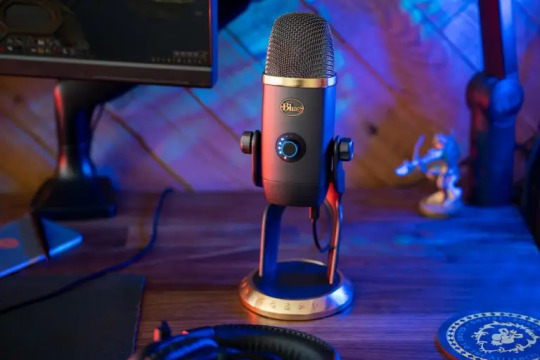
Overall, our testers’ preferred USB microphone was the Blue Yeti X. It has several features that make daily use simpler and feels sturdy and well-built. You can mix the music coming from the headphones and control the gain and level with a single knob on the device’s front.
An LED metre on the front displays the level of the incoming sound, and the same front button also functions as a mute button. You can see whether it’s too loud and change the microphone’s gain if necessary. A button on the rear can also be used to change the pickup pattern.
This USB microphone is excellent at fusing great quality with adaptability. This microphone doesn’t have many drawbacks, however the front-facing knob could be attempting to accomplish too much at once. Using all of its controls can be a bit challenging.
While the handbook explains everything, it takes some time until it becomes second nature. Also, while the weight was advantageous in the home studio, it can be a nuisance when travelling.
Pros:
has a lot of additional features
excellent audio quality
dependable construction
Cons:
not an XLR cable
It takes time to get used to controls.
podcast production studio with Rode microphones

If you require a production set with professional sound quality, this one is a fantastic choice since it produces a rich, warm sound. Also, you may choose from eight different effects on the programmable pad for your podcast, phone interview, and any other audio recording needs.
This production studio may be quickly connected to a phone, Bluetooth device, or computer for audio recording on a micro SD card. Live shows may also be streamed, however some users complain that the streaming quality isn’t very good. The console is quite simple to use, and people appear to appreciate the way their audio sounds after recording.
Pros:
very user-friendly console
eight distinct sound effects
has a USB-C and USB-A cable included.
Cons
Expensive
The streaming function has mediocre quality.
MV7 Shure

The Motiv M7 from Shure is a high-end option that is nevertheless reasonably priced for podcasters. It includes a touch-slider on the front that can be used to change the mic gain and headphone level. There is also a mute button and a button to switch between the two functions.
Shure’s debut into the USB market is a dynamic mic, which means that it is a little better for uncontrolled conditions and is more resilient on the inside. It manages rumbling and background noise effectively. The M7 also uses the ShurePlus MOTIV app to regulate tone, volume, setup, and other features. Also, the mic incorporates a conventional XLR connector, increasing its adaptability in case you wish to expand your studio.
This mic is extremely focused and excellent for clarity. It has trouble recording two individuals speaking at once if they are speaking while standing in various places in front of the microphone. You’ll probably need more than one mic if you’re trying to record several people.
The lack of a stand that comes with this microphone as standard also disappointed us. You will have to spend extra for a little tripod if you don’t already have a mic stand.
Pros
Sharp, concentrated sound
The microphone’s gain and headphone adjustments
Cons
no tripod or microphone stand
Unsuitable for discourse
Wireless Logitech MX Master 3 Mouse
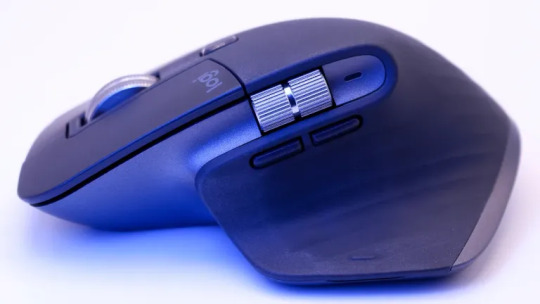
With its overall precision and speed capabilities, this wireless mouse is ideal to add to your podcast setup. Three separate computers can reliably scroll 1,000 lines per second with this mouse. Also, it can operate on any surface and adapts to the specific form of your hand.
You’ll especially appreciate how quiet it is if you’re attempting to remain silent while editing your podcast into the wee hours of the morning. This wireless mouse may be readily recharged for up to 70 days of use.
Pros
a year-long warranty
ergonomically comfortable grip
Cons
Expensive
Headset OneOdio

Every great podcaster includes a sturdy headset in their setup. If you’re just starting off with podcast hosting, this is a fantastic, economical choice. This headset seems to work well if you require something that produces clear, crisp audio, despite the fact that many buyers complain that it isn’t the most robust.
Moreover, this headset includes a flexible, adjustable headband to fit a range of head sizes and shapes as well as a comfy, cushioned ear cushion. Better more, this headset features a shareport technology feature that lets you watch movies, listen to music, watch videos, and more with friends, family, and coworkers.
Pros
includes a user manual
Affordable
has a sharing function
Cons
Not very durable
Read More: For the Podcast Recorders Here is All Essential Products are listed Read Full.
0 notes
Text
RØDE đã làm cho hệ thống micrô kênh đôi Wireless Go II của mình có khả năng di động tốt hơn nữa nhờ hai bản cập nhật mới. Trong đó, bản cập nhật đầu tiên là ứng dụng RØDE Central mobile mới cho phép bạn hoàn toàn có thể tùy chỉnh và thiết lập hệ thống micrô không dây thông qua thiết bị di động, trong khi bản cập nhật thứ hai là khả năng tương thích mới với ứng dụng RØDE Connect desktop, cho phép người dùng sử dụng hệ thống micro với podcasting hoặc phần mềm phát trực tuyến.
https://vj360.vn/cac-ban-cap-nhat-moi-cho-phep-thiet-bi-android-ios-dieu-khien-he-thong-rode-wireless-go-ii/
2 notes
·
View notes
Note
Hi! I'm a high schooler with a passion for film who hasn't actually filmed anything yet. I'm planning to get started by just filming stuff and gaining experience over time. I want to buy gear (camera, lights, etc) so I can get started but it's an expensive investment and I'm unsure what I should get. Do you have any ways to figure out which gear is good for me?
Hello @jeffreydahmerofficial
There are lots of options when it comes to gear and it can be a bit of an investment. So I have put together a starter kit with some gear breakdowns, recommendations, and prices. The prices listed are if you are purchasing brand new equipment. You can most likely find used equipment or older models that work just as well for a lower price. In addition, some miscellaneous gear you can make yourself (dollies, steadicams, light bars…), if you are willing and able to put in the time and effort.
Film Gear Starter Kit
Cameras
DSLR - digital cameras are great starter cameras because they are cheaper, small, maneuverable, and produce good quality videos. You can even buy older models to reduce the price and still get good quality (You can also buy used.) Canon and Nikon are good cameras as are some Sonys, but I am partial to Canons. When purchasing, pay special attention to if you are purchasing the camera with or without a lens and what type of lens (I recommend a zoom to start out.)
Some good DSLRs:
Nikon D3300 ($350-500) - great quality image for a relatively low price. A lens is included, so you don’t have to worry about finding one separately.
Canon EOS Rebel T5 ($350-450) - any of the rebel cameras are good, but being newer (but not the newest model) the T5 is a great choice. It has decent low-light capabilities and comes with a zoom lens.
Nikon D5300 ($400-500) - with a better sensor, and a bit more customization opions, this Nikon is a step up from the D3300 with very little change in price.
Canon EOS 6D ($1,200-1,600) - a good substitute for the more expensive 5D Mark III. For the price jump, you get much higher image processing quality and great low-light capabilities.
Canon EOS 80D ($750-1,000) - much like the 6D, it has great low-light capabilities and great image quality, plus a maneuverable viewscreen
Camcorder - In terms of video quality, DSLRs can offer the same image quality as a camcorder at a much lower price. However, camcorders have a lot to offer as well. They have much longer recording time andare built for video, so it is much easier to hold one for long periods of time, despite DSLRs being lighter. They also have built in XLR inputs and neutral density filters, which means camcorder will automatically properly expose your footage without changing the frame rate. (Bonus: They look professional, which is helpful when working freelance.)
Some good camcorders:
Canon XA30 ($1,300-2,000) - a professional/semi-professional camcorder that is easy to use, has good low-light capabilities, a touch screen, and is relatively inexpensive for a camcorder.
Sony HXR NX100 ($1,500-2,000) - an entry-level professional camcorder that has HD quality video, good low-light capabilities, 2 XLR inputs, and 3 focus rings. It’s comparable to the more expensive Canon XF200.
Canon VIXIA GX10 ($2,500-3,000) - a “consumer” camera with professional video quality, this camcorder shoots in 4K. While it lacks some pro features, such as the XLR port, it is very portable and has optical zoom, a touch screen, (You can also get a nice kit that includes a mic, cables, backpack case, LED lights, memory card, and more for under $2,700.)
Canon XF300 ($3,000-4,000) - a professional camcorder great for run-and-gun as well as on a shoulder mount. It has a slightly larger, rotating viewscreen, 2 XLR ports, full manual and full auto modes, built in ND filters, and more.
Misc. Camera Gear
Tripod ($20-200) - a staple for any filmmaker. You can get cheap, lightweight ones for about $20. I recommend investing in something sturdier, so you don’t risk having your camera fall over because of a flimsy tripod.
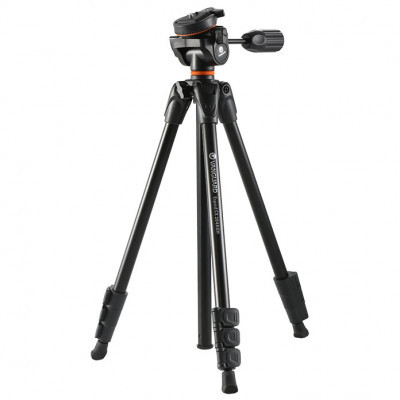
This a vanguard tripod that is good for DSLRs. It’s lightweight and small, which is great for traveling, but it also can’t support heavier cameras, so when purchasing, look at the load to see if it can support the weight of your camera. You can find Vanguard tripods and similar brands for under $50, but some run a little higher.
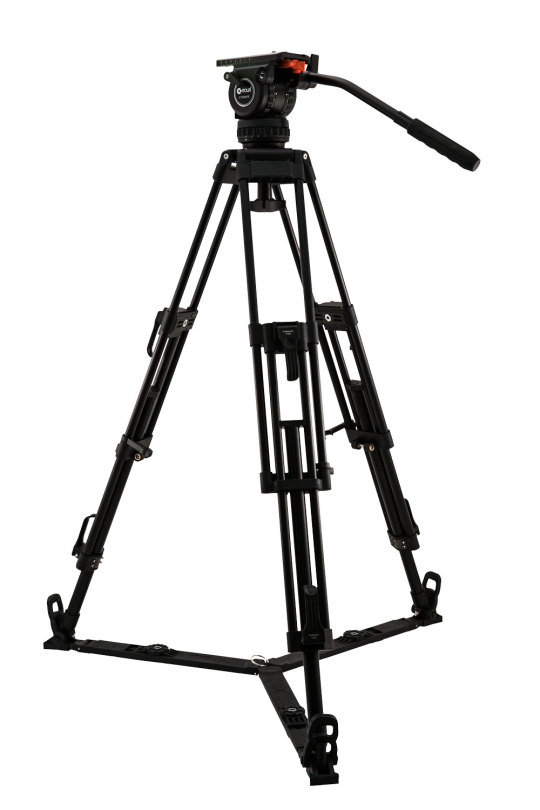
This is an example of a heavy duty tripod with a fluid head for easy maneuvering. These tripods are extremely sturdy and can easily support the weight of camcorders and higher-end cameras. You can get a good one of these for around $150-$200.
Cases/Bags ($30-60) - get cases for everything: cameras, microphones, lighting, tripods, etc. You invested a lot into your gear. It is worth it to spend a little more to protect it and keep everything in good condition.
SD cards ($25-50) - I recommend 32GB or higher and make sure they are higher class cards. Otherwise, some cards may stop recording automatically with DSLRs because they can’t keep up with the writing speed.
Steadicam ($30-150) - professional steadicams are much more expensive, but you can find cheap and effective ones for DSLRs relatively easily. They give a cleaner handheld look that improves the look of your film immensely. They even have steadicams for smartphones!
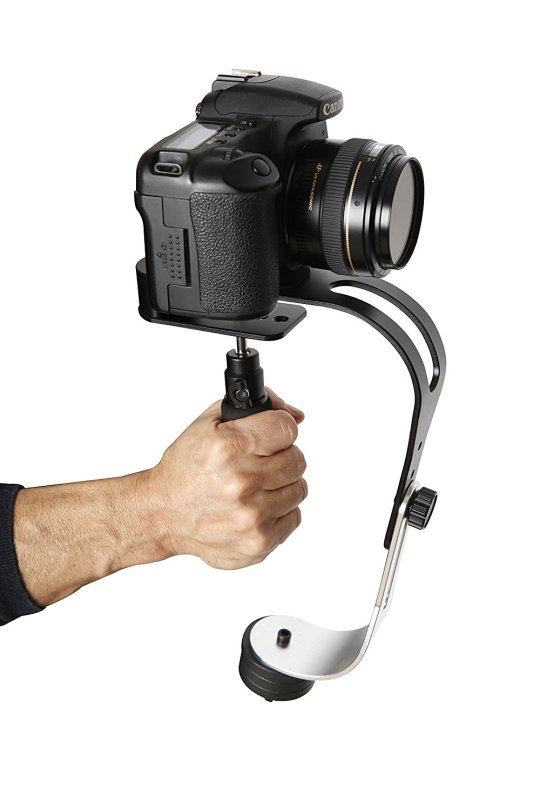
Pictured Above: Roxant Pro Steadicam
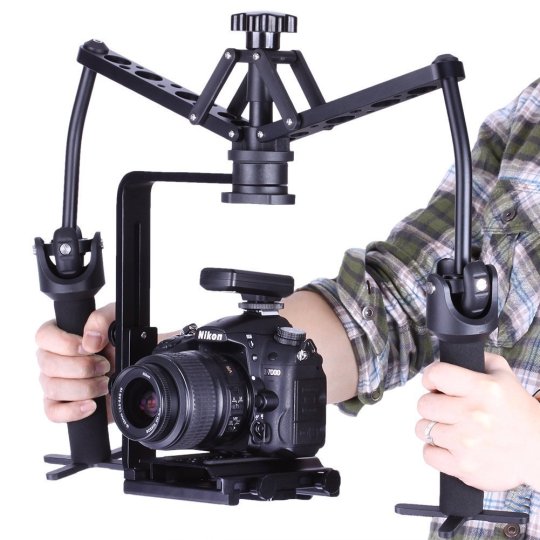
Pictured Above: Ceari VILTROX WD-Z Steadicam
Microphones
Shotgun mic - a staple of you want good (or even decent) sound for your film. Unfortunately, a good mic is easily as expensive as a DSLR and requires more gear. With a shotgun mic, you need to also purchase an XLR cable, shockmount, and windscreen. Often it’s cheaper to purchase a kit rather than buy these separately.
Some recommended shotgun mics:
Rode VideoMic ($100-200) - A lower-end shotgun mic meant to be mounted directly onto a DSLR. It has decent quality sound, doesn’t need an XLR cable, has a built in shockmount, and is relatively cheap.
Audio-Technica AT875R ($150-200) - a cheaper semi-pro microphone that requires an XLR cable and phantom power. It’s smaller and has a wider pickup range, making it a good on-camera solution. It can also be mounted on a boom pole or stand. It is better for studio and indoor recording. Although it’s much cheaper, it holds its own against the Sennheiser MKE 600.
Sennheiser MKE 600 ($300-400) - powered by battery or phantom power, this is a good, well-rounded mic.
Rode NTG3 or NTG4 ($350-550) - the NTG series is very popular in the filmmaking world. While NTG3 is arguably better, the NTG4 is cheaper and still produces very good quality sound.
Lav mics - great for wide shots, interviews, outdoor audio and as second audio source. You can hide these guys relatively easily when booming is not an option. The great thing about lavalier microphones is they are relatively inexpensive and you can get good sound with a really cheap lav.
Some recommended lav mics:
Neewer 3.5mm ($5-10) - a super cheap lav that’s great for buying in bulk. It’s a bit harder to hide, but works great for interview videos.
Sony ECMCS3 ($15-30) - this is a sensitive, durable, and inexpensive lav that picks up sound from both sides.
Rode Smartlav+ ($50-70) - this practical, high quality lav hooks up directly to your smartphone, external recorder, or camera.
Sennheiser EW 100 ENG G3 ($700-800) - if you are willing to spend more, these are some of the best wireless lavaliers. They have great quality and can be easily hidden.
External Sound Recorders - crucial if you plan on moving your microphone far away from the camera. Booming is usually done using external sound, meaning the mic is hooked up to an external recorder rather than the actual camera. The sound is synced in post. (That’s why we have a clapper!)
Some recommended Sound Recorders:
Zoom H1 ($50-100) - One of the first Zoom recorders, this is one of the cheapest and most basic options. It’s compatible with micro SD cards, battery operated and has a built-in omni-directional mic.
Zoom H4N Pro ($150-200) - one of the most popular and highest rated external recorders, it’s well worth the investment. It has 4-channel recording, a larger screen, easy navigation, 4 hour battery life, and a built-in omni-directional mic. (I personally recommend this one.)
Tascam DR-40 ($150-200) - with a 15 hour battery life, this 4-channel recorder is a good rival to the Zoom H4N, but it’s extra features make it slightly more expensive.
Misc. Sound Gear
Boom pole ($100-300)- sound quality improves immensely when you are able to put the mic closer to the subject rather than mounting in on the camera. You can get a pole with the cord built in or without, which is slightly cheaper. (Full disclosure: I’ve used a monopod as a mini boom pole before. Not great, but it got the job done. This guy even turned a light stand into a boom pole.)
Headphones ($100-200) - specialized or noise-cancelling headphones so you can clearly hear the audio you are capturing on set and while editing. Earbuds work, but they are far from ideal.
Deadcat ($20-30) - minimizes wind noise, very helpful for outdoor shoots. Available for both shotgun mics and lavs. You can easily get this used for under $15, but new ones are more expensive.
Lighting
Lighting is necessary on bigger shoots, but for freelance and beginners, you rarely have your own lighting outside of a studio. Lights are expensive and most of the time, you won’t be able to use them without a crew (especially outdoors). When you do use them, you will most likely be much more experienced and either working for a company with lighting equipment, or running your own company.
I recommend purchasing a cheap photography lighting set to have some lights, but wait to invest in higher end lighting. A cheap lighting + green screen kit can cost around $100-200(I personally have 2 cheap umbrella lights and while I like them, I rarely use them.) That being said, below are some common types of lights and their general price ranges. Professional brands include: Arri, Lowel, KinoFlo, Limelite, and Ikan.
Softbox/Umbrella Lights ($200-550) - used mostly in studios and photography, they give off, you guessed it, soft light and have florescent bulbs. These are great when you need a quick light source, they are lightweight, and don’t easily overheat.
Can Lights ($500-1,000) - these are the classic lights you see on film sets. They can get very hot, but they are small, lightweight, bright, easy to assemble, and you can use diffusers, filters, and gels to customize the light.
LEDs ($1,000-2,000) - LED lights are the most expensive but also the most useful. They allow you to easily dim the light and change the temperature and they don’t overheat or use as much power.
Misc. Lighting Gear
Gloves ($30-40) - lights get hot and when you need to maneuver them up close, it’s safe to have heat-resistant gloves. Set-specific gloves are more expensive, but you can find cheaper options elsewhere that work just as well.
Bounce board ($5-10) - these can replace a fill light and help add a little more light to your scene without purchasing an expensive and bulky light. You can get collapsible reflector disc with white, silver, and/or gold for the price listed. Poster-board is another cheap alternative.
Gels, diffusers, and dimmers ($20-30) - If you don’t have an LED light, you can modify the color of a light source with gels. They work on any light source from industrial lights to household lamps and are very handy and inexpensive. (The price listed is for a kit of all of these products, but you can buy sheets of any of these for just a few dollars.)
Gaffers Tape ($5-10) - heat resistant and doesn’t leave residue. Gaff tape is used for just about everything on set from lighting, to setting marks, to taping down cords, to labeling.
I hope this helped and didn’t overwhelm you too much! Just a reminder: these are just some options based on what I see used in the industry. There is plenty of gear out there and plenty of cheaper solutions and substitutes for some gear. As always, it’s the filmmaker, not the gear that makes a good movie (but getting good gear is always nice!)
Best,
Jules
#ask box#my filmmaking tips#film gear#film equipment#cameras#microphones#lighting#lights#production#camera department#sound department#g&e
678 notes
·
View notes
Text
youtube
GMC Sierra EV vs Silverado EV - A Justifiable Premium? Shot on iPhone 16 Pro Max Rode Wireless Micro: https://geni.us/FBnQh via YouTube https://www.youtube.com/watch?v=GzS-xgs5y64
0 notes
Text
Microphone Rode Wireless Go
https://kyma.vn/mic-khong-day-rode-wireless-go.html
Rode Wireless Go là một bổ sung tuyệt vời cho bộ video của bạn mà không mất thời gian thiết lập và hoạt động rất đáng tin cậy, mang lại âm thanh chất lượng cao. Wireless Go được cho là hệ thống micro không dây nhỏ gọn, linh hoạt nhất thế giới - vì vậy bạn không có lý do gì để không sử dụng nó khi cần quay video. Và ở mức giá này, nó là một khoản đầu tư tuyệt vời cho bất kỳ vlogger hoặc Youtuber nào.

0 notes
Text
Sennheiser XSW-D Portable ENG Set, l'autre wireless
Sennheiser XSW-D Portable ENG Set, l’autre wireless
Après avoir pris en main le Rode Wireless Go, j’ai eu l’opportunité de réaliser une journée de tournage vidéo avec le système Sennheiser XSW-D. C’est le kit ENG pour “ENGineer” … un kit qui comprend un micro-cravate et un émetteur doté d’un connecteur XLR qui permet d’y connecter un microphone. J’y ai associé un micro Sennheiser e845S. Sennheiser XSW-D sur Panasonic Lumix FZ-2500 Déballage et…

View On WordPress
0 notes
Photo

Follow @shootguru ・・・ Team @shootguru Gear . Bag: @atlaspacks #atlasadventurepack . Cameras: Canon 5D mkii, Sony a7s, Sony a6300 . Lenses: Canon 70-200 f2.8, Canon 50mm f1.4, Rokinon 35mm, 24mm, 85mm f1.5T, Sony 16mm f2.8, Sony 17-35mm . Converter: Digitek and Comlite EF to E mount . Light: Yongnuo LED light panels - 2 . Viltrox HD field monitor . Mac Book Pro 13in . Sound: Zoom H4N, Boya Wireless Lavaliere, Sony wired Lavaliere, Rode micro . Gorilla Pod . All the above is in this bag, keep tuned for a packing video soon . Comment with your gear and win goodies, tag @shootguru or just add #shootguru to your posts for a chance to get featured . #canon #cameragear #canon📷 #canonphotography #canonphoto #canonusa #canoneos #canongearnerd #canon5dmarkiv #canon5d #canon1635f4is #teamcanon #wideangle #redring #lseries #lens #lenses #photogear #cameragear #photograph #photography #photographer #photooftheday #instagood
#canon5d#canonusa#lseries#shootguru#cameragear#teamcanon#canon5dmarkiv#instagood#canonphotography#atlasadventurepack#photographer#canon1635f4is#photograph#photogear#lenses#canon📷#wideangle#photooftheday#photography#canoneos#redring#lens#canongearnerd#canonphoto#canon
2 notes
·
View notes
Text
8 mẫu micro tốt nhất để làm vlog 2021 đáng mua
Nếu đang có nhu cầu chọn mua micro để làm vlog thì đừng bỏ qua 8 sản phẩm micro tốt nhất để làm vlog được chúng tôi gợi ý dưới đây bạn nhé!
>>> Tham khảo thêm sản phẩm Máy ảnh Nikon hay Máy ảnh Fujifilm
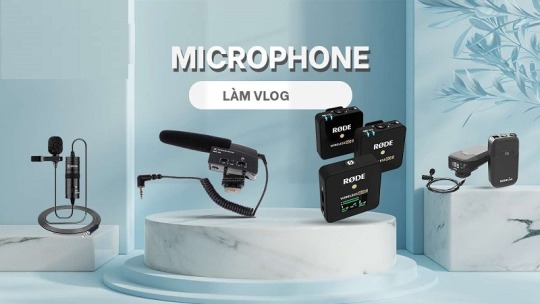
Micro lavalier không dây
Rode Wireless Go II
Micro sử dụng băng tần 2,4GHz và cung cấp phạm vi khoảng 200m, hơn gấp đôi phạm vi của hệ thống ban đầu.
Trong một nâng cấp quan trọng khác của bản gốc, bộ thu Rode Wireless Go II có khả năng kết nối với hai bộ phát. Điều đó làm cho nó hữu ích cho các cuộc phỏng vấn trực tiếp cũng như tường thuật hoặc thuyết minh cá nhân.
Cả hai thiết bị phát trong Go II đều có một viên nang bên trong hoạt động bằng áp suất và phân cực trước với kiểu nhận đa hướng và dải tần từ 50Hz đến 20kHz. Chúng cũng có đầu vào TRS 3,5 mm, có nghĩa là bạn cũng có thể kết nối một micrô khác, ch��ng hạn như lavalier.
Rode đã nâng tầm trò chơi cho Wireless Go II bằng cách thêm khả năng ghi âm thanh lên đến 24 giờ cho mỗi bộ phát.
Rode Lavalier Go
Mặc dù được thiết kế để ghép nối với hệ thống micrô không dây Rode Wireless Go, nhưng Lavalier Go thực sự tương thích với hầu hết các máy ảnh và thiết bị ghi âm, với đầu vào micro TRS 3,5 mm.
Rode Lavalier Go là một micro lavalier cấp chuyên nghiệp với viên nang tụ điện đa hướng và cáp được gia cố bằng Kevlar. Tích hợp với micro là một lọc gió để giảm thiểu tiếng ồn của gió, một kẹp áo linh hoạt, cho phép người dùng tự chủ lắp chiếc micro ở bất kỳ vị trí nào và một túi mềm để cất giữ.
Rode Wireless Go
Rode Wireless Go đi kèm với một bộ phát (có micrô tích hợp) và một bộ thu, ghép nối với nhau chỉ trong 3 giây. Cả hai thiết bị chỉ nặng 31 gram mỗi chiếc và có cùng kích thước nhỏ gọn. Chúng có pin sạc tích hợp với thời gian chạy khoảng 7 giờ.
Bộ phát có thể được kẹp vào quần áo của đối tượng và, với micrô đa hướng tích hợp của nó, tự hoạt động tốt. Nhưng cũng có một ổ cắm để bạn có thể gắn micrô lav. Đầu thu kết nối với máy ảnh của bạn bằng dây dẫn ngắn 3,5 mm và nằm trên đế gắn máy ảnh.
Rode Rodelink
Rode Rodelink có tần số đáp ứng từ 35Hz đến 22kHz và khả năng hoạt động trên tám kênh, mỗi kênh có 1000 tần số. Điều đó có nghĩa là bạn có thể có hai bộ dụng cụ sử dụng cùng một kênh mà không bị nhiễu
Micro sử dụng đường truyền kỹ thuật số 2.4GHz với mã hóa 128-bit và có phạm vi 100m ấn tượng.
Micro lavalier có dây
Boya BY-M1
Micro có dây BY-M1 này tạo ra âm thanh tuyệt vời với độ ồn thấp. Micro thu âm này có nguồn điện có thể chuyển đổi, có nghĩa là bạn có thể chạy nó bằng pin tích hợp hoặc thông qua thiết bị được cắm vào.
Micro có thể được sử dụng với máy ảnh DSLR, điện thoại thông minh hoặc máy tính bảng và dễ dàng thiết lập. Nó có mức độ nhạy cao ở -30dB, có nghĩa là bạn có thể thu được những tiếng ồn nhỏ, đồng thời có thể phát hiện âm thanh từ 65Hz đến 18.000Hz.
BY-M1 đi kèm với kẹp ve áo, dây cáp dài 6m và kính chắn gió bằng xốp để giảm tiếng ồn và tiếng ồn của gió.
Micro shotgun
Rode VideoMic Pro
Micro được thiết kế đặc biệt để sử dụng với máy ảnh DSLR, máy ảnh không gương lật, máy quay phim, máy ghi âm và điện thoại thông minh. Nó có một đầu nối 3,5mm có thể dễ dàng được lắp vào cổng micrô bên ngoài của máy ảnh vlog để có được chất lượng âm thanh hoàn hảo.
Với viên nén ngưng tụ 1/2 “, bạn có thể dễ dàng có được chất lượng âm thanh phát sóng với âm thanh rõ ràng sắc nét cùng một lúc. Tiếng ồn xung quanh được giảm đủ để khán giả có thể tập trung vào những gì bạn đang nói một cách dễ dàng.
Micro shotgun này cũng có pin 9V ấn tượng, cung cấp năng lượng khoảng 70 giờ trước khi cần thay thế.
Rode VideoMic Go
Rode VideoMic Go là một micro shotgun khác trong danh sách của chúng mình với mức giá phải chăng. Phải nói rằng, so với Rode VideoMic Pro, mô hình này khá nhẹ và đó là lý do chính mà nó được dùng để làm vlog.
Kích thước nhỏ gọn cho phép bạn dễ dàng gắn nó vào bất kỳ máy quay video nào của mình để thưởng thức việc ghi lại các vlog của bạn một cách yên bình.
Đáp ứng tần số trải dài từ 100Hz-16KHz, nhưng bản ghi phong phú và đầy đủ, vì vậy chúng mình không thấy nó thiếu âm trầm. Âm thanh có độ sắc nét khi đường cong đáp ứng của nó nhẹ nhàng tăng lên để tăng cường ở khoảng 4KHz.
Một phụ kiện khác đã được bổ sung với mic là giá đỡ chống sốc Rycote Lyre giúp ghi âm rõ ràng và không bị biến dạng ngay cả khi bạn đang di chuyển với tốc độ cao trong khi quay video.
Cuối cùng, micro Rode này rất dễ cài đặt. Nó đi kèm với một giắc cắm 3,5 mm khi được kết nối với đầu vào micrô bên ngoài của máy ảnh, bắt đầu hoạt động mà không gặp bất kỳ vấn đề gì.
Sennheiser MKE400
Sennheiser MKE400 là một trong những micro shotgun tốt nhất cho các vlogger. Micro cho cảm giác rất chắc chắn, cứng cáp và cao cấp vì được làm từ kim loại. Chất lượng âm thanh tổng thể của chiếc micro này thật tuyệt vời, rõ ràng và khả năng tái tạo âm thanh rất tốt.
Khi bạn ghi âm bằng micrô trên đầu máy ảnh, micro chắc chắn sẽ nhận giọng nói của bạn nhưng cùng với đó, nó cũng sẽ thu âm thanh mà máy ảnh của bạn tạo ra khi bạn điều chỉnh ống kính hoặc nhấn một nút, nó cũng sẽ thu tiếng ồn được tạo ra khi bạn di chuyển với micrô. Nhưng với sự trợ giúp của giá đỡ sốc, tất cả những tiếng ồn này sẽ bị loại bỏ và chỉ giọng nói của bạn được ghi lại.
Sennheiser MKE400 có thời lượng pin rất dài khoảng 300 giờ. Bạn có thể sử dụng micro khi chụp ảnh ngoài trời mà không cần lo lắng về thời lượng pin.
Sennheiser MKE400 cũng có pin lâu dài. 1 pin AAA đơn giản có thể chạy 300 giờ liên tục mà không gây ra bất kỳ sự cố nào. Bạn có thể sử dụng micro khi chụp ảnh ngoài trời mà không cần lo lắng về thời lượng pin.
Nguồn: https:/kpnet.vn/top-8-san-pham-micro-tot-nhat-de-lam-vlog.html
Địa chỉ cung cấp các sản phẩm công nghệ, máy ảnh, ống kính,.. uy tín chất lượng
Công ty cổ phần công nghệ Kyma
Địa chỉ: 474 Nguyễn Thị Minh Khai, TP. Hồ Chí Minh
132 Yên Lãng, P.Thịnh Quang, Q.Đống Đa, TP. Hà Nội
0 notes
Text
Canon M50 Mk II: Is It Really That Bad?
Canon M50 Mk II
9.20 / 10
Read Reviews
Read More Reviews
Read More Reviews
Read More Reviews
Read More Reviews
Read More Reviews
Read More Reviews
Read More Reviews
Read More Reviews
Read More Reviews
Read More Reviews
Read More Reviews
Read More Reviews
Read More Reviews
Read More Reviews
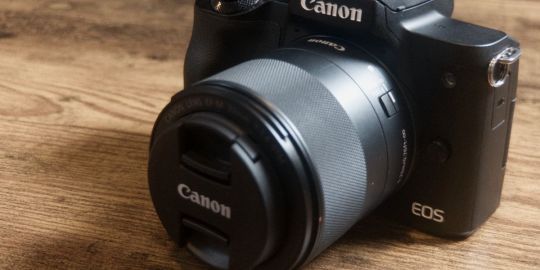
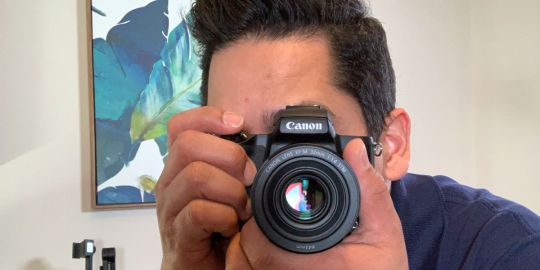
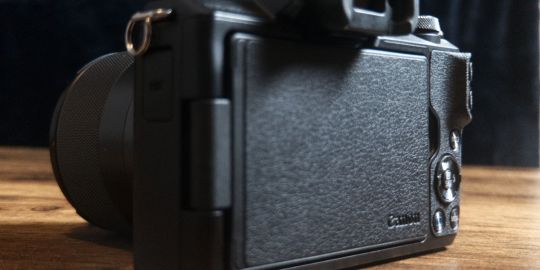
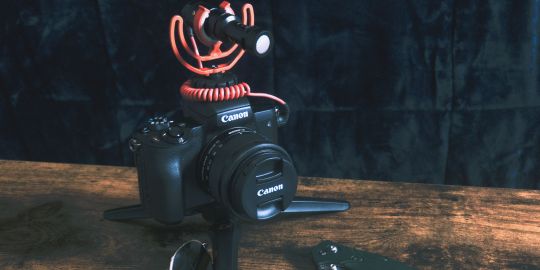
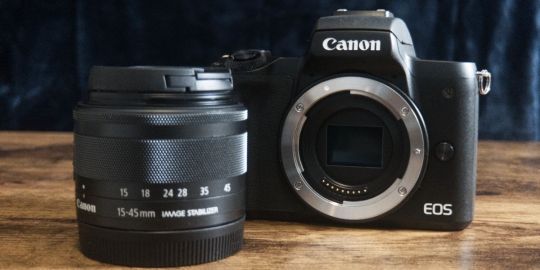
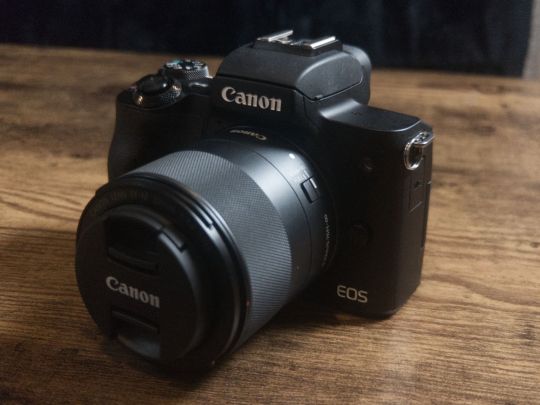
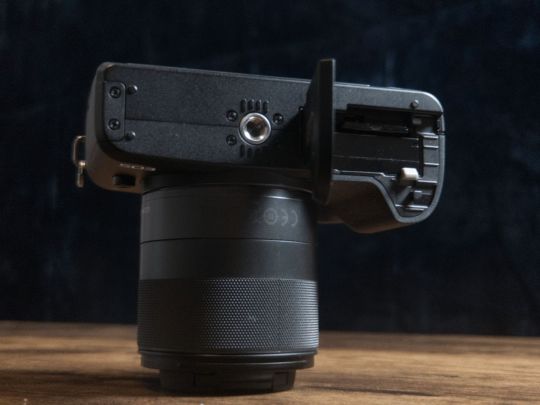
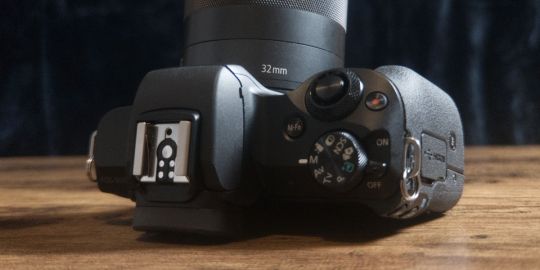
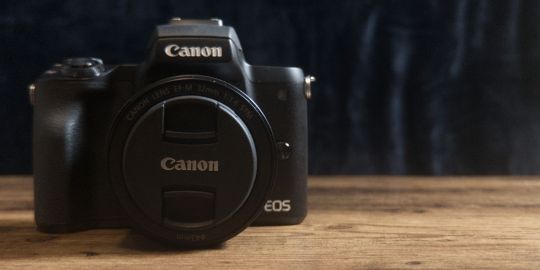
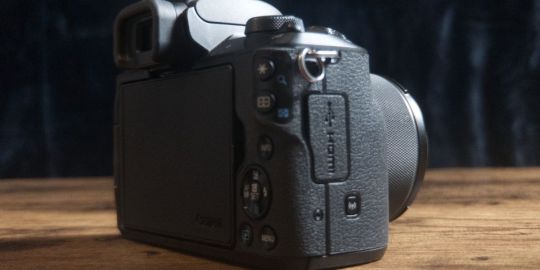
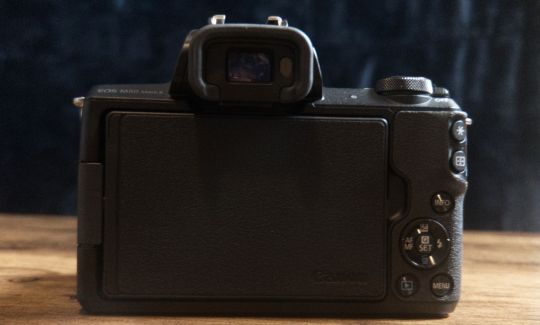
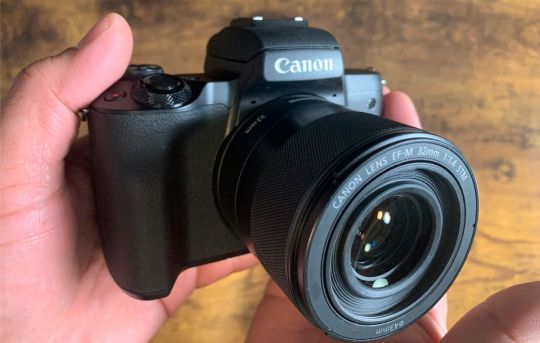
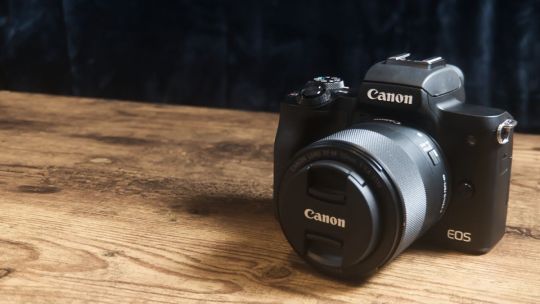
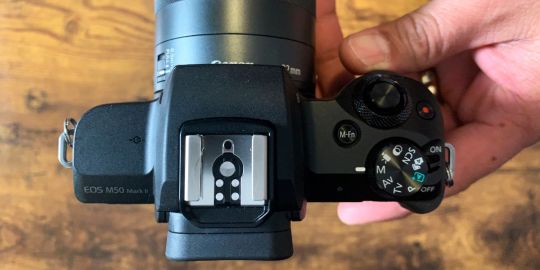
See on amazon
If you're looking for a starter camera that makes your photos and videos pop, you can’t go wrong with the EOS M50 Mk II.
Key Features
Lightweight
YouTube Streaming
Vertical Shooting Mode
4K video (Cropped)
Flip-Out Display
Mirrorless
Hot Shoe Mount
Specifications
Brand: Canon
Sensor Size: CMOS APS-C 22.3mm x 14.9mm
Video Resolution: 3840 x 2160
Photo Resolution: 6000 x 4000
Battery: Yes
Connection: USB, HDMI, Audio In
Size: 4.6 x 3.5 x 2.3 inches (Body only)
Weight: 387 g
Water Resistance: No
Lens: 15 - 45 mm kit lens ; EF-M mount
Pros
Easy to Use
Onboard Mic Input
Clean HDMI Out
Vlogging Beast
Wide Range of Accessories
Photos and Videos are Stunning
Durablity
Cons
Battery Life
Only Slight Upgrade from Original
Kit Lens is Just Okay
Canon App is Terrible
Buy This Product

Canon M50 Mk II amazon
Shop
// Bottom var galleryThumbs1 = new Swiper('.gallery-thumbs-1', { spaceBetween: 10, slidesPerView: 10, freeMode: true, watchSlidesVisibility: true, watchSlidesProgress: true, centerInsufficientSlides: true, allowTouchMove: false, preventClicks: false, breakpoints: { 1024: { slidesPerView: 6, } }, }); // Top var galleryTop1 = new Swiper('.gallery-top-1', { spaceBetween: 10, allowTouchMove: false, loop: true, preventClicks: false, breakpoints: { 1024: { allowTouchMove: true, } }, navigation: { nextEl: '.swiper-button-next', prevEl: '.swiper-button-prev', }, thumbs: { swiper: galleryThumbs1 } });
F-Stops. ISO. Shutter Speed. Autofocus. The Exposure Triangle. Focal Length. 35mm vs. 50mm. Full-Frame vs. Micro Four Thirds. Mirrorless vs. DSLR. As a beginner, this is a short list of terms that you’ll be expected to know to get the best out of a consumer-grade camera.
While there is no substitute for good-old-fashioned-experimentation when it comes to shooting photos, sometimes you want to grab your camera and take a decent picture. But maybe you want to live out your Casey Neistat dreams of being the next Youtube Vlog sensation. Heck, maybe you'd like to use a camera that doesn’t come with a monthly service plan or double as a handheld Bejeweled Blitz machine.
youtube
If only there were an entry-level camera that could help you solve those problems without costing a small fortune. If only a camera could take great photos without generating snotty looks from mustachioed hipsters effortlessly wielding their $8,000 Leicas. Well, folks, allow me to introduce you to the Canon EOS M50 Mk II.
The EOS M50 Mk II is the new 24.1-megapixel, mirrorless camera that improves upon the M50 Mk I from 2018. It uses the DIGIC 8 processor, designed to improve image quality even at higher ISO speeds. The EOS M50 Mk II can shoot 4K—more on that in a moment—at 24 frames per second (FPS); and shoot 1080P up to 60 FPS. The maximum video image size is 3840 x 2160.

Canon considers this its "entry-level" offering, and I am inclined to agree. But, with the entry-level price point and consumer in mind, that means the camera offers several features that make it easy for the average person to use. I think that's one of the EOS M50 Mk II's biggest strengths.
What’s in the Box?
The Canon EOS M50 Mk II Body
15-45mm Zoom lens
Owner’s Manual
Battery
Charger
Lens caps
The Canon M50 Mk II is the second iteration of the previous Canon M50 mirrorless camera staple in the YouTube vlogging world. A search on YouTube yields an almost endless supply of M50 videos. Seriously, everyone has this camera.
The wide use means there's also an abundance of accessories available for the M50 Mark II, including lenses, cages, speed-boosters, USB power adapters, 110v A/C plug-in power supplies, and much more.

So, what makes the EOS M50 Mk II better than the original? And why should you fork over an additional $50 bucks on top of the price of the original M50 for the standard Mk II body-and-kit-lens package? And what about all that negative press?! Isn’t the M50 Mk II just a software update to the original M50?
Yes. Essentially the hardware for the M50 Mk II is the same as the original M50. And Yes, the Mk II is essentially just a software update from the original. Don’t listen to the haters, though. You should still buy the Mk II unless you're only planning on taking photos.
Related: Common Camera Lenses and When to Use Them
But why? Well, mostly because I think it adds $50 worth of additional features that you’re not going to get if you decide to buy the original.
Features like autofocus improvements, and a clean HDMI out, which means that you can plug the M50 MK II into a desktop monitor to gaze into your own pretty face while filming for your adoring YouTube fanbase, or record to an external device.

There’s also better battery life. That means about 1/3 more photos than the original M50, not to mention more video footage. And the Mk II offers improvements to autofocus, as well as a new feature—eye-tracking focus. Plus, you can use autofocus while the AI Servo AF is active—a feature that makes motion capture simple and is absent from the original M50.
Is the EOS M50 Mk II an Upgrade?
If you’re going to make a decently large purchase for a camera that is around $700, then you want the absolute maximum of features packed into whatever you buy. While the original M50 is still a great camera, it’s not the best for vlogging, and the camera’s anemic battery life has been flagged more than once. Of course, you could always spend a little extra and buy another battery if you like. That’s a great way to go as well. Or you could buy the Mk II.
Then there's the autofocus. Canon is famous for its dual pixel autofocus. I won’t get into the jargon-y specifics because I don’t like to bore my readers, but what you need to know is this: Canon's dual pixel autofocus is awesome.
youtube
It’s great for videos and normal photography alike. It’s also fast. Eye-controlled focus (eye-tracking) adds to the dual pixel autofocus by accentuating the subject’s eyes while shooting.
It’s generally accepted that if you want to take good portraits, then you should focus—no pun—on the eyes of your subject. The eye-tracking focus feature makes it easy to do just that.

In addition to the improvements in autofocus, Canon added a vertical video shooting mode designed for your favorite photo and video-based social media platforms. The company has added wireless YouTube streaming (though YouTube restrictions mean you'll need over 1,000 subscribers), and you get that clean HDMI out so that if you’re streaming via the HDMI port, you don’t have to stare at the on-camera settings.
Related: A Complete Guide to the Exposure Triangle in Photography
This on-camera info display was a huge gripe for a lot of folks with the original EOS M50. With that model, whenever you connected an external display, there was no way to turn off the busy informational display settings. The Mk II changes that.

While we’re on the subject of minor gripes with the M50 Mark I, let’s talk about a feature that the Mark II has that the Mark I didn't. The flip-out screen record button.
That means you can now reach over and tap the on-screen button to start your video while you can still see yourself in the frame. The new on-screen record button is a little thing, but it’s something that the vlogging crowd and I certainly appreciate.
The M50 Mark II also makes it quick to get up and running. Charge the battery, pop on the lens, insert a memory card and get shooting. Additionally, for all of you colorists, the Mk II can shoot in a mostly flat color profile with a little software tweaking. But, I should note that it won't shoot LOG.

Did I mention that the M50 Mk II can be used with Zoom and OBS or the Canon EOS Webcam Utility as a webcam? It can, and it is also fabulous for this purpose as long as you have enough battery life to support it.
Personally, I bought an adapter that allows me to plug the camera into an AC cable and plug that cable into the wall. I love it. Every time I use the M50 Mk II as a webcam, I get bombarded with questions about my setup.
For the best use of this feature, I'd recommend you look into the 22mm f2.0 lens that Canon offers for the EF-M mount cameras. This lens gives you a wider shot and a larger aperture than the 15-45mm kit lens that the M50 ships with.
Related: Simple Ways to Improve the Quality of Your Photos
Ease of Use
Arguably the biggest benefit of the Mark II is how easy it is to pick up and use. Unfortunately, the kit lens isn’t the sharpest, and the f/3.5 aperture doesn’t lend itself to the type of creamy bokeh that you’re used to seeing in professional portrait photography. Still, for amateur photographers looking to get their feet wet, this is a great package.

For point-and-shoot photography, the 15-45mm kit lens is more than enough to make your photos pop. Though, you should know that low-light settings are going to require increased ISO. Past 400 things start to get a little grainy, but most photos don’t really suffer until you’re around the 800+ mark.
The one thing the 15-45mm kit lens is excellent at is vlog content creation. Paired with a small on-camera shotgun mic and a gimbal or GorillaPod, this setup is a vlogging beast. It’s no wonder so many YouTubers—some with several hundred thousand followers—use their EOS M50 as their primary run-and-gun rig.

While the Canon’s mic preamp is slightly lacking, using this setup with both the Rode VideoMicro and the Takstar Sgc-598 provided plenty of decent quality audio capture. A little normalization and compression in post were all it took to get decent quality sound.
Related: How to Take Care of Your Camera Lenses
Is the M50 Mk II Durable?
It is, and I want to take a moment to focus on its durability. Now I admit, I am not the most careful person when it comes to my equipment. That’s why, when I managed to knock over my tripod not once but twice, with the M50 Mk II on top of it, I almost wound up on blood pressure meds.
Both times I thought I was going to scoop up a camera with some extreme damage. Maybe a broken viewfinder or a smashed touch screen.

Well, I am happy to report that my Canon M50 Mk II doesn’t have a scratch on it. The lenses aren’t cracked or damaged, and the display is clear and sharp. The body of the camera looks like it was just taken out of the box.
There are really only two possibilities for why this is: either I’m lucky (and I certainly need to be more careful with my equipment) or, maybe the M50 Mk II is a pretty durable unit for even the most buttery of fingers.
What's Not to Love About the M50 Mk II?
After a few weeks using the M50 MK II, I can honestly say I have only a couple of complaints. First is the cropped image in 4K. While this camera is touted as a 4K camera and perfectly capable of recording in 4K, the sensor will dump a large portion of its field of view. This is an additional 1.6x crop over the APS-C crop of 1.6x (2.56x total). Also, while in the 4K mode, you lose Canon’s delicious dual pixel autofocus.

This isn’t really a problem for me, as I don’t like shooting in 4K anyway. Even when I am creating content, I prefer to shoot at 24 FPS in 1080p full HD. Footage shot at 24 FPS has that cinematic look that I adore, and I can use the autofocus to make sure all of my shots are effortlessly tack sharp.
Second, on this list is the Canon iOS app. I hate it. It’s buggy, it’s clunky, it crashes often, and it constantly makes me reset the Wi-Fi settings of the camera to use my phone as a wireless display. The app drives me absolutely insane, and if any Canon app developers are reading—shame on you.

Last on the list is the digital viewfinder. While it works well as a viewfinder, the sensor next to the viewfinder might give me an aneurysm. Whenever I am using the camera for Zoom meetings, I find the sensor will shut off the external display if it is near a reflective surface—namely, the watercolor painting hanging above my desk. Fortunately, this sensor can be disabled in the menu for the M50 Mk II.
Should You Buy the Canon EOS M50 Mk II?
I think you know the answer to this question by now. If you don’t, then get your credit card out; it’s time to do some camera buying. The original M50 was a great all-around camera. The Mark II adds several improvements aimed at content creators and vloggers. If you fit that description, and you can’t afford to spend $3,000 to improve your smartphone shots, then the M50 MK II is a great choice.

If you are looking to start a YouTube channel, then the M50 Mk II has enough features to keep you busy for a while. You might eventually outgrow it, though some YouTubers continue with the M50 well into the six-figure subscriber counts.
If you need a camera that will allow you to level up your photographs, this is the camera to buy. And while you’re at it, think about upgrading from the kit lens to the Canon 32mm F1.4. It’s how I get most of my product photography shots. Finally, if you need a small and lightweight camera for taking on the road or for street photography, the M50 Mark II isn’t cumbersome and doesn’t draw a lot of attention.
On the other hand, if you’re a die-hard camera enthusiast who breathes shutter speeds, or if you can spot the difference between a nifty 50 and a 35mm at 300 yards, then you’re better off buying something a little more high-end. Additionally, if the thought of auto-anything makes you shudder (pun intended), then save up for a while and buy a Sony A7s III. You’ll be much happier.
Final Focus on the EOS M50 Mark II
Overall, the M50 Mk II is a delightful starter camera. Canon makes it easy for a total beginner to pick up the unit and get some great photos off the rip. That’s really what makes it excellent. It has a diverse range of functions for both budding photogs and experienced users alike. Unfortunately, it won’t compete with some of the more expensive models, but for regular people who want a camera that makes their photos look great without much effort, you can’t go wrong with the EOS M50 Mk II.
Ignore the crowd that says this camera is “disappointing.” It’s not. It just has a specific purpose, and what it is designed to do—namely, be an entry-level vlogging camera with excellent photo capability—it does well.
Though the M50 Mark II might not make you a YouTube star, it will help you get started.
Canon M50 Mk II: Is It Really That Bad? published first on http://droneseco.tumblr.com/
0 notes
Text
Rode VideoMicro or Wireless Go
In this video we compare these two excellent youtube friendly microphones, Both of which work with my canon M50 & any camera capable of taking a mini aux input for audio.
We compared the sound directly in good and not so perfect sound environments, See how far the rode wireless go can work from, it's got impressive range btw! An we also outline the key features. I tend to just focus on benefits, Sure theres drawbacks to either option. But i focus on use case so that you can make the best choice for what you want to achieve. A great gift idea for a youtuber
See Rode VideoMicro or Wireless Go pricing below
Rode Video Micro - https://amzn.to/351XAtH
Rode Wireless Go - https://amzn.to/2HZGvay
0 notes